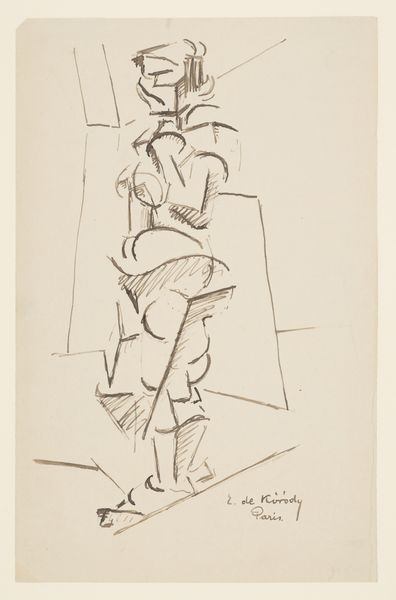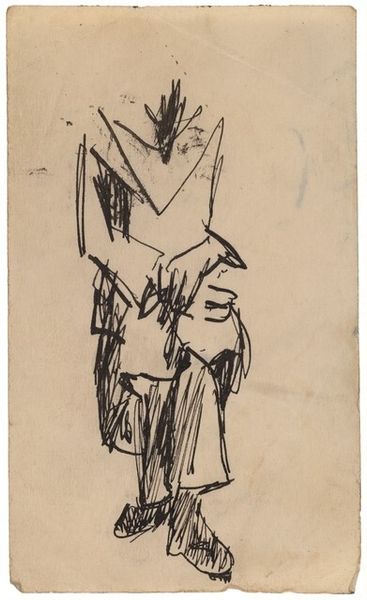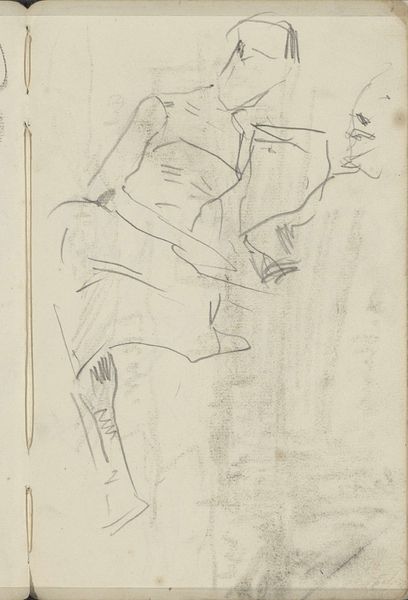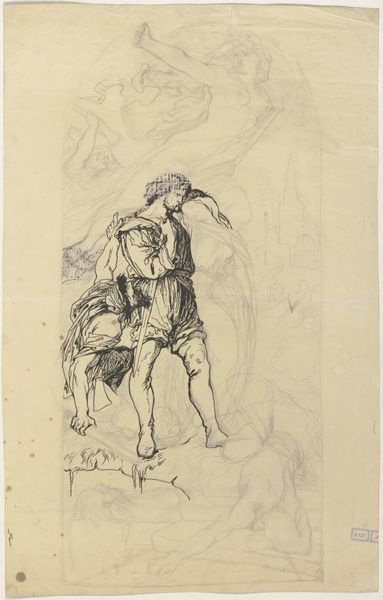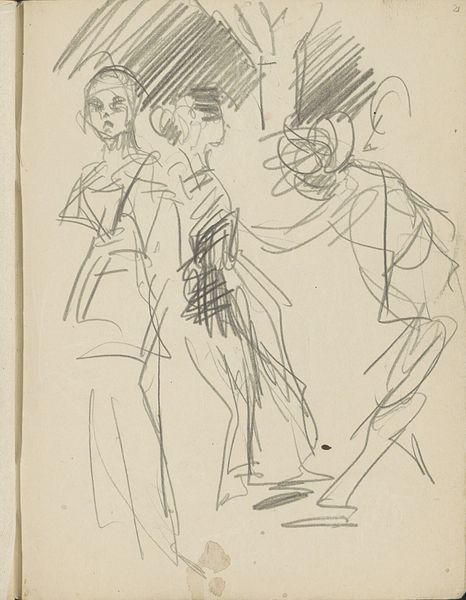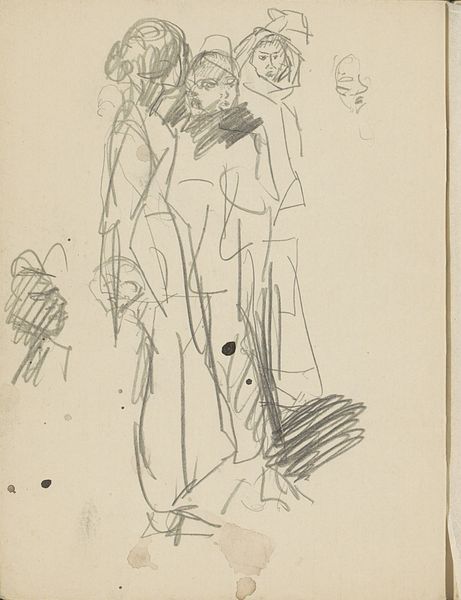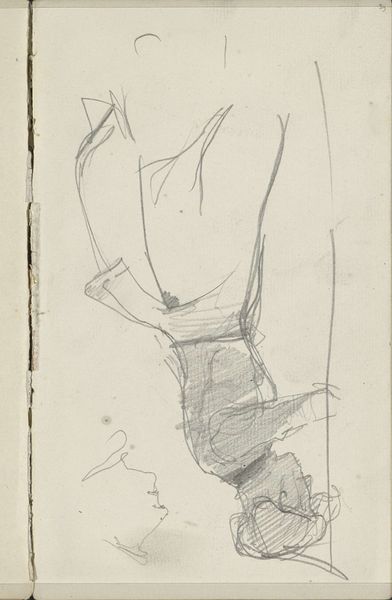
drawing, paper, pencil
#
portrait
#
drawing
#
figuration
#
paper
#
pencil
#
expressionism
Copyright: Public Domain
Editor: Here we have Max Beckmann’s "Dancing Couple," a pencil drawing on paper from around 1920. I’m immediately struck by the jagged, almost frantic lines – it gives the impression of movement, but also…discomfort? What stands out to you about this piece? Curator: That feeling of discomfort is palpable, isn’t it? It resonates deeply, considering the socio-political turmoil of the Weimar Republic. Notice how Beckmann employs very specific, loaded visual cues. The top hat, for instance. What does a top hat signify to you? Editor: Usually wealth or status, something associated with the upper classes? Curator: Precisely. Now consider the awkward embrace, almost a forced closeness, rendered with these angular lines. Does this not feel like a distorted version of a traditional symbol of merriment, something almost grotesque? The Expressionists used such images to expose and critique. It's not merely a "dancing couple," but a symbol perhaps of the desperate clinging to tradition. What might the hat symbolise if that tradition feels as if it is falling down all around you? Editor: So, it’s less about capturing a joyful dance and more about commenting on the instability of the time, using the dance itself as a symbol? Curator: Exactly! And notice, also, the lines themselves; not smooth or elegant, but broken and agitated, mirroring the fractured reality many experienced during that era. Cultural memory, embedded in the pencil strokes. Editor: Wow, I wouldn’t have seen all that on my own! I thought it was just a rough sketch. Curator: It’s about decoding the visual language! Every line, every form contributes to a larger narrative. That’s why Expressionism speaks so powerfully even now. Editor: Definitely! I’ll never look at a "simple" drawing the same way again. Curator: Nor should you. Because even apparent simplicity hides layer upon layer.
Comments
No comments
Be the first to comment and join the conversation on the ultimate creative platform.
